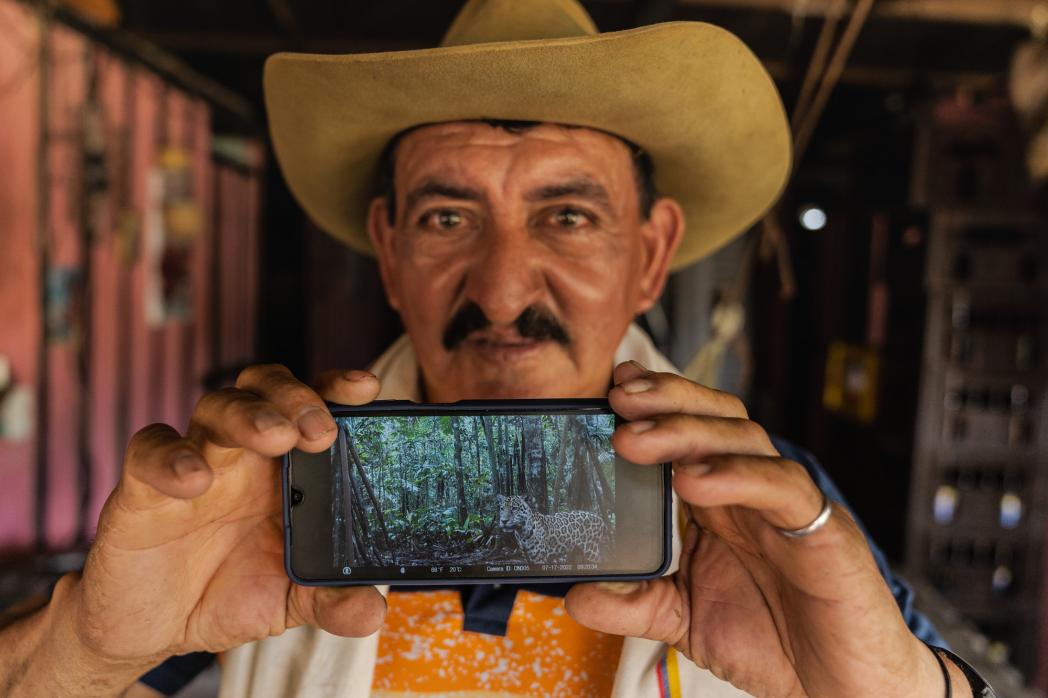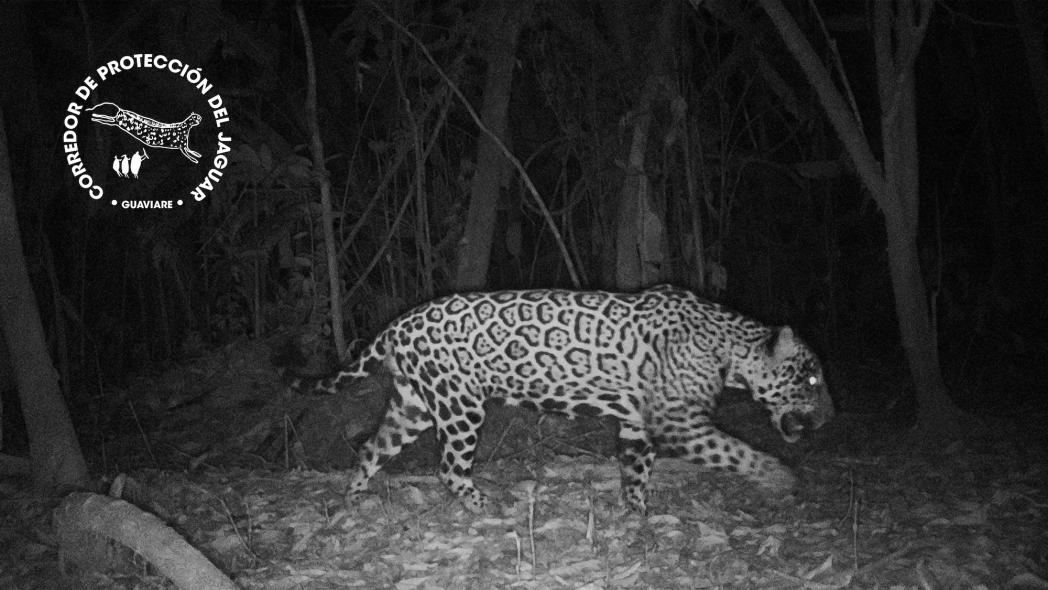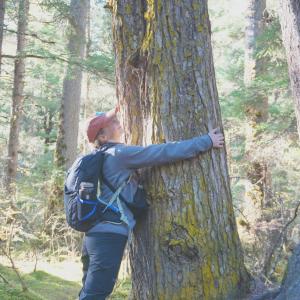In Guaviare, in the Colombian Amazon, birdsong and the creaking of the jungle still dominate the landscape, and the roar of the jaguar endures, a powerful guardian of the biodiverse forest. Conservation here is born from the territory, with local eyes, simple tools, and a shared intention: to protect the forest and its inhabitants. Since 2021, five monitoring seasons have been conducted in the Jaguar Protection Corridor, a territory of almost 496,000 hectares that connects rainforests, savannas, and key water sources for wildlife.
Camera traps, strategically installed by local promoters, have been the key tool in this effort. An average of 56 cameras have been set up every year, for three months at a time.

This effort has made it possible to document more than 114 wildlife species. Jaguars have consistently been among captured on camera – they have been recorded in every monitoring season. In the most recent monitoring season (2024), jaguars appeared in 22% of active cameras. A powerful sign of their persistence in a landscape threatened by deforestation beyond the corridor.
Occupancy analyses, a robust technique for assessing the distribution and use of an area by a species, suggests the jaguar has maintained a stable presence in the corridor during these four years. In a context of active deforestation and human-wildlife conflict, this already represents a significant achievement.

Importantly, the information and data are the property of the community (shown by their very own logo on the camera trap images), who use them to make decisions about their territory. Among other conservation uses, the camera trap monitoring findings are used to promote the coexistence of humans and wildlife through evidence and dialogue. Thanks to community ownership and technical support, solutions are being promoted that enable coexistence, such as electric fences, alert plans, and protocols for responding to incidents without endangering the jaguar, domestic animals, or people.

“You don't take care of what you don't know. When we discover what we have and understand its value, we take ownership and protect it.”
Claudia Cocuy, coordinator of promoters in the Jaguar Corridor
Over the years of this project, there has been a shift in perceptions of the jaguar.
"People now call us to install cameras on their farms. Even ranchers who previously viewed the jaguar as a threat now want to record and protect it."
Yefer González, a young promoter

